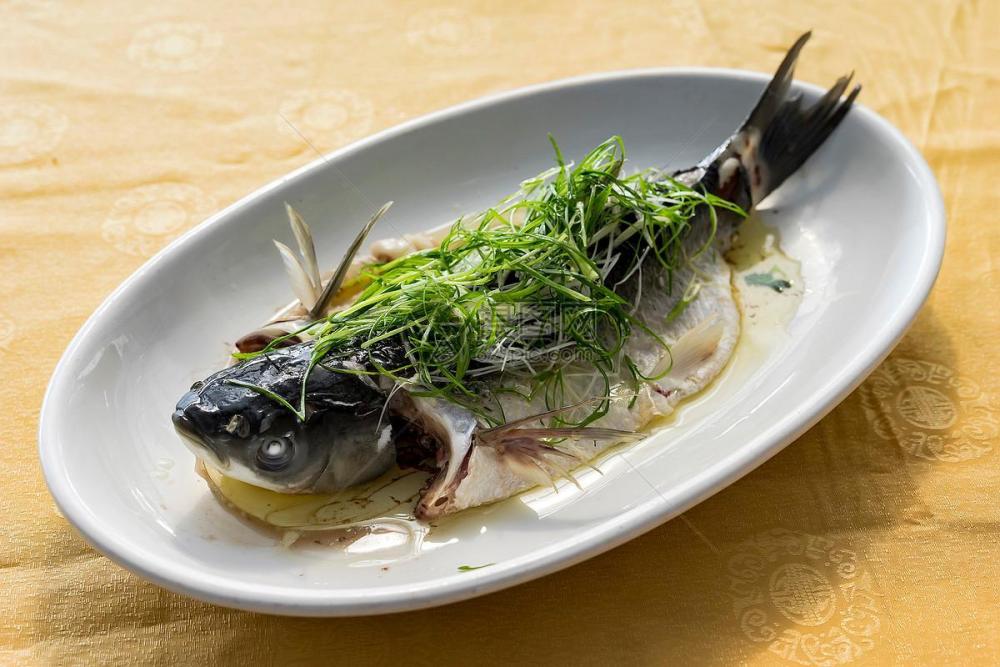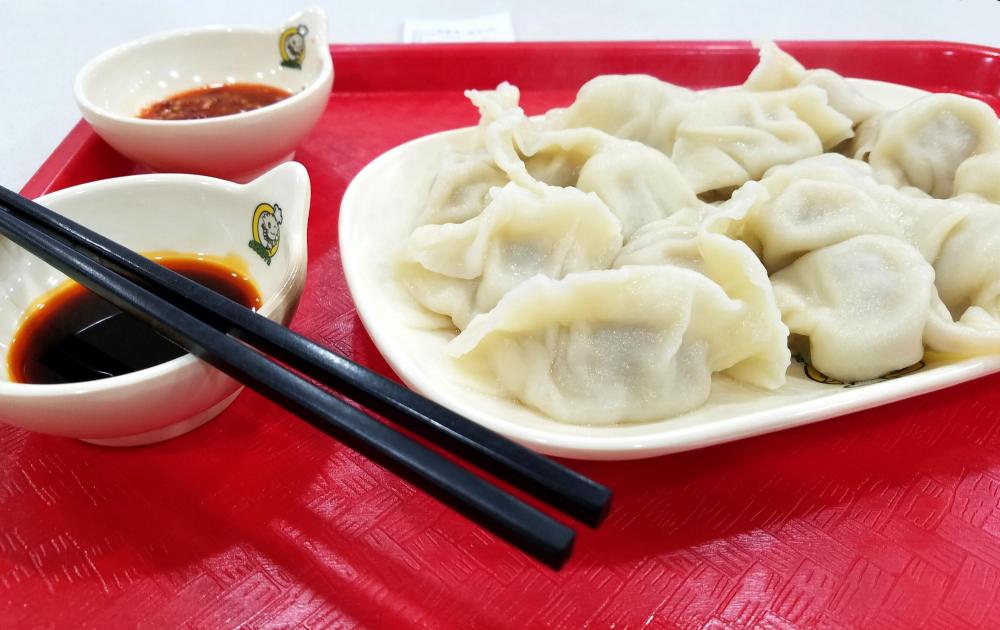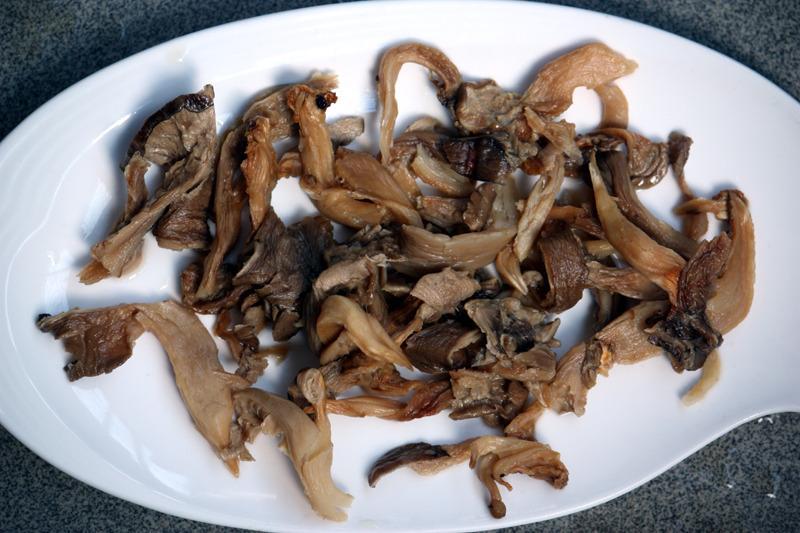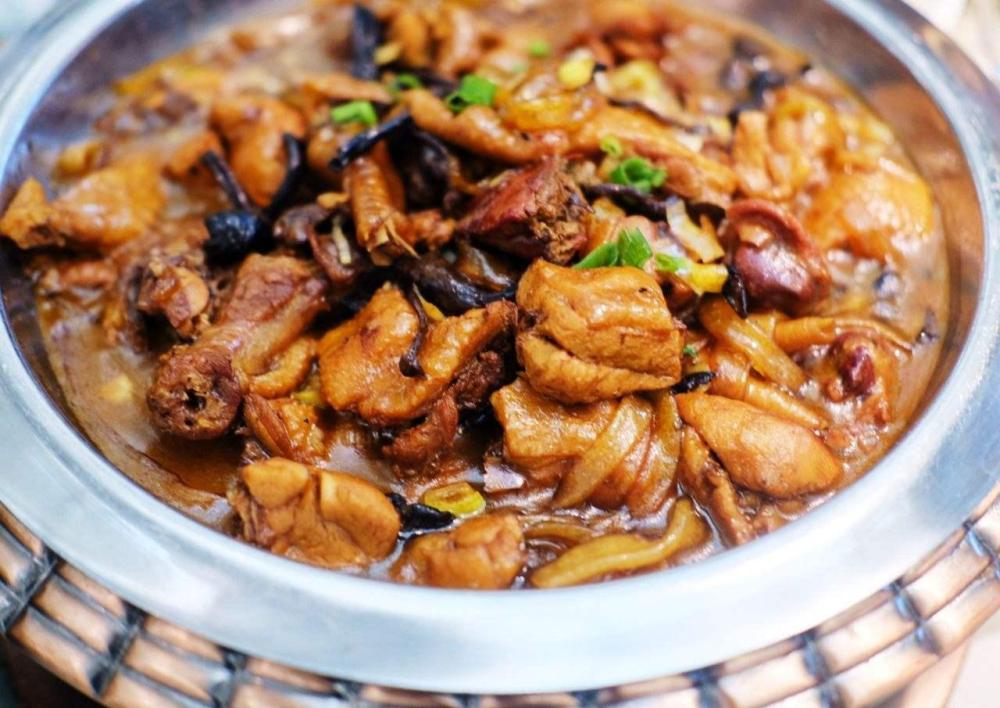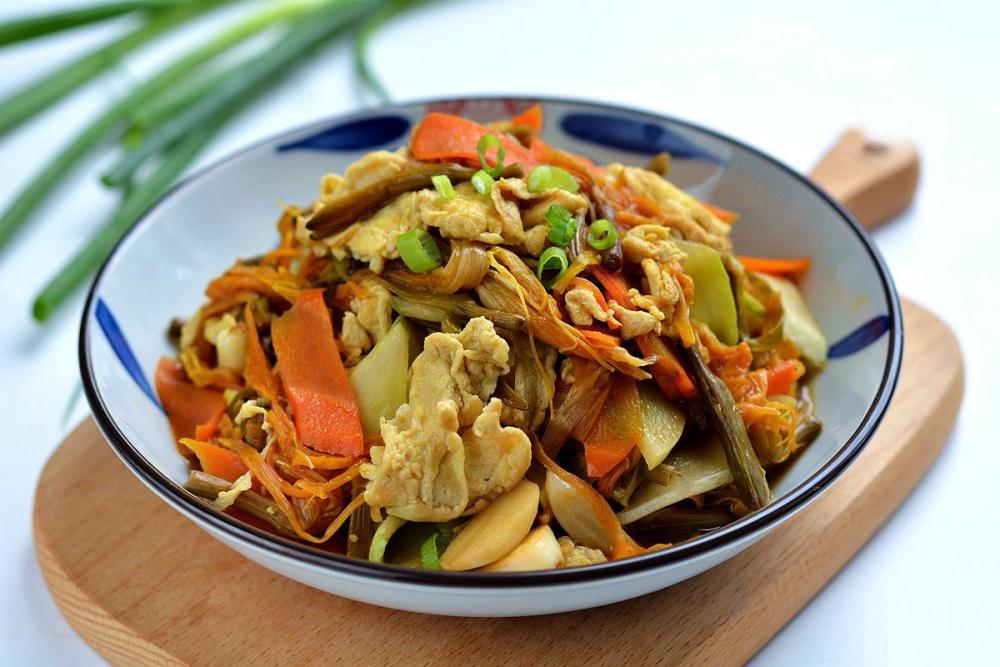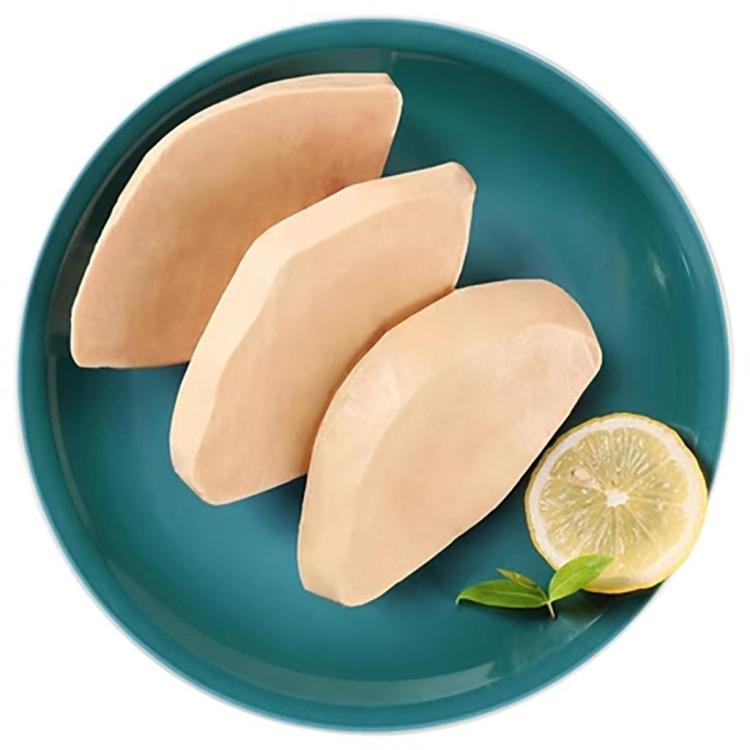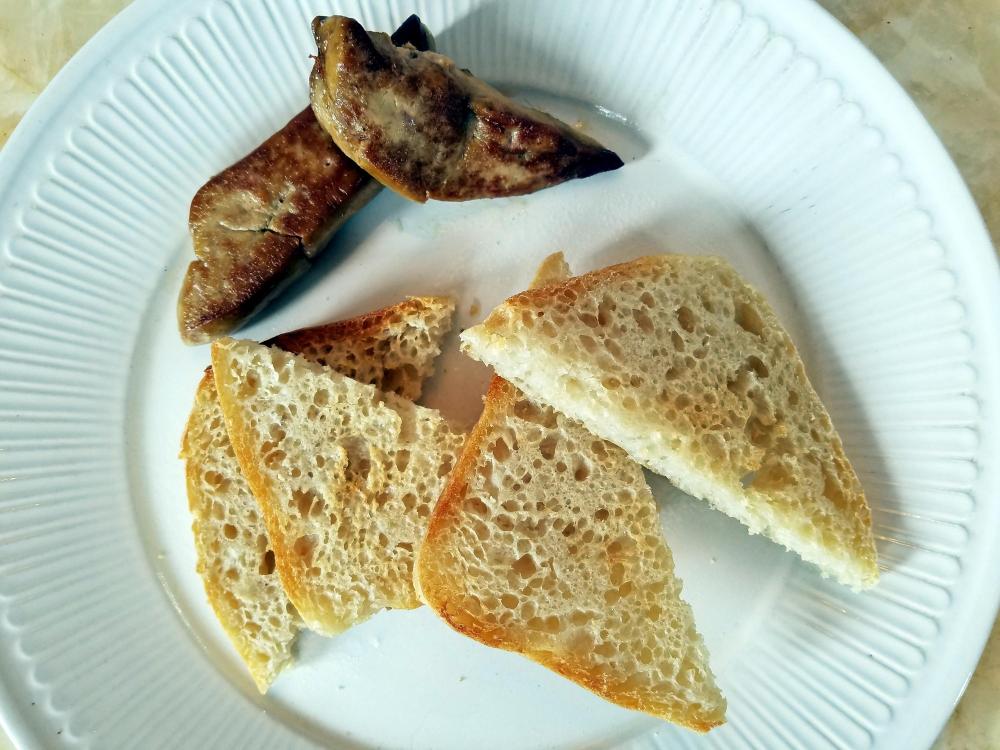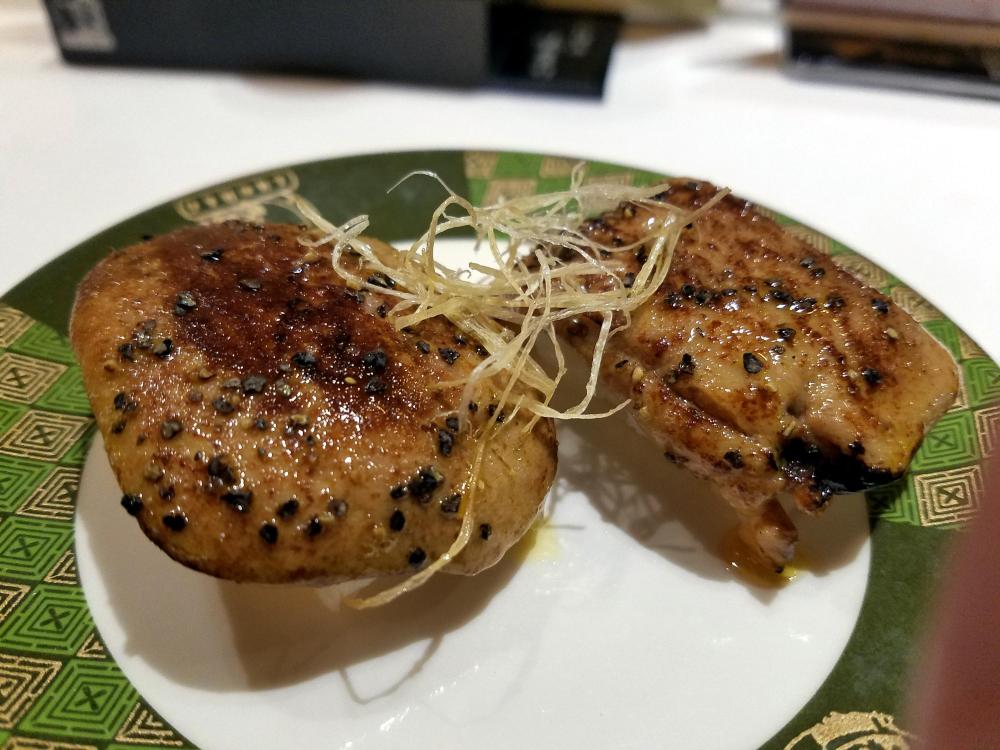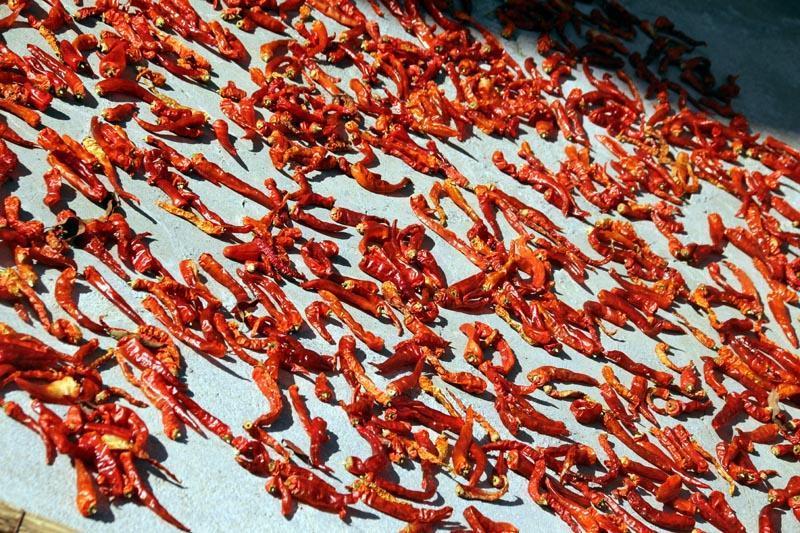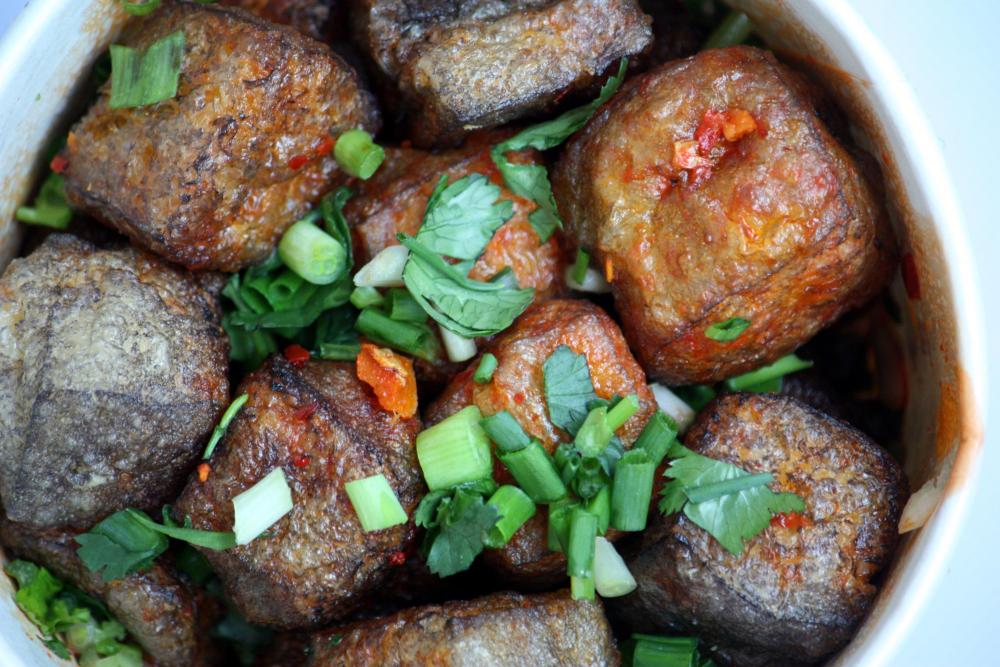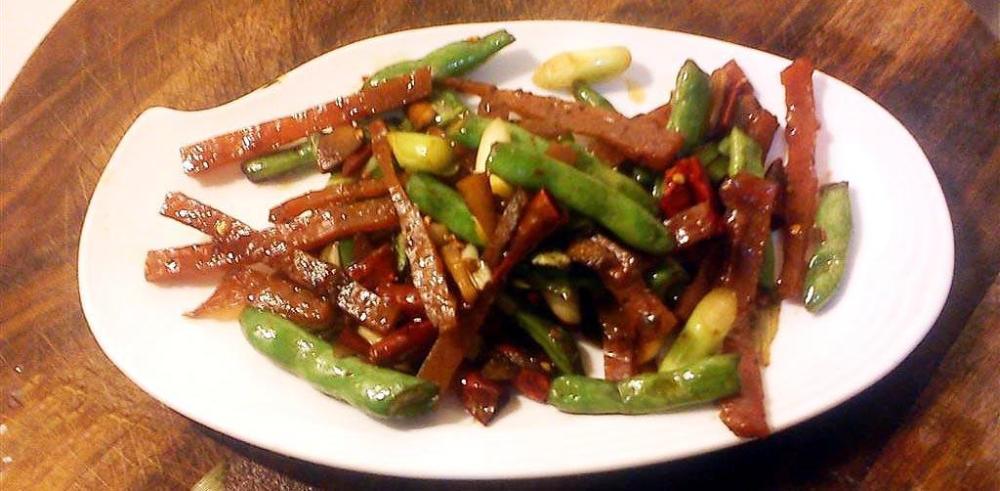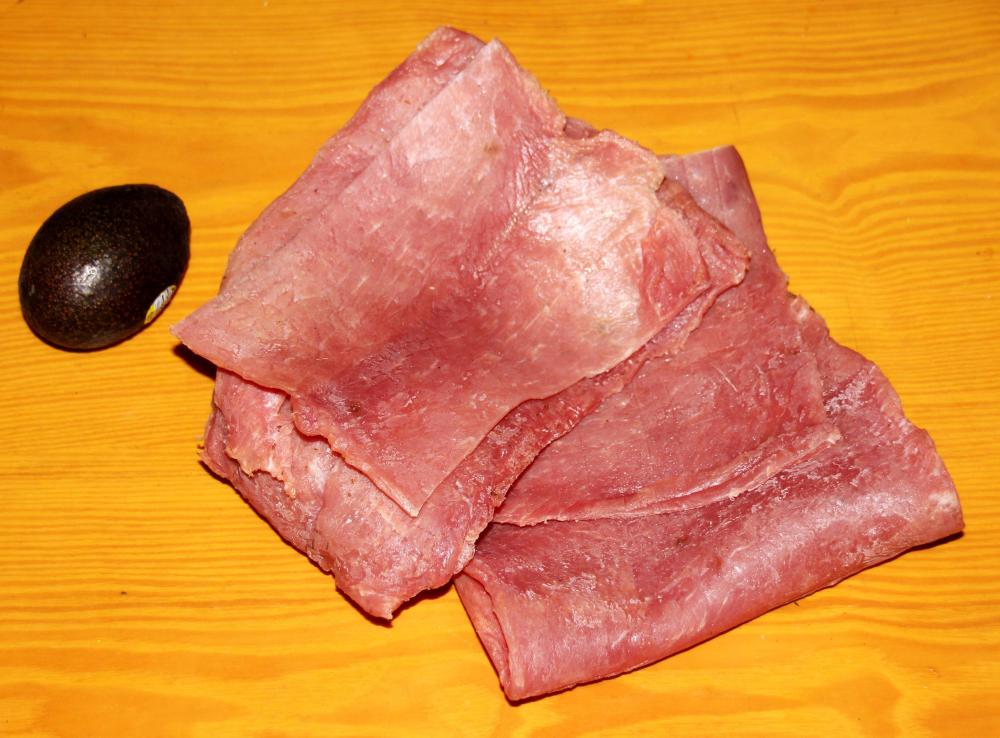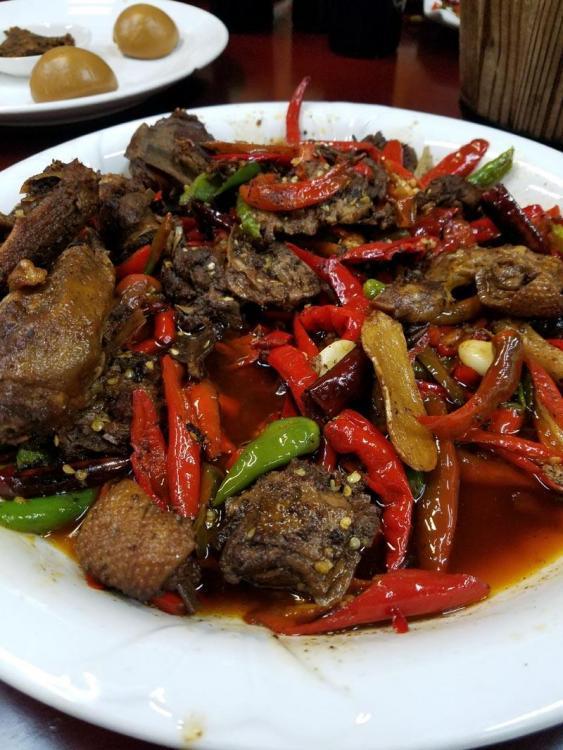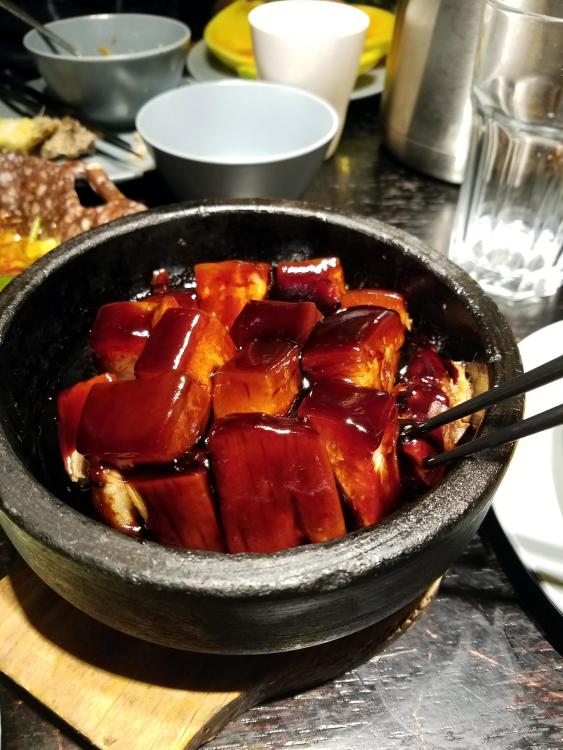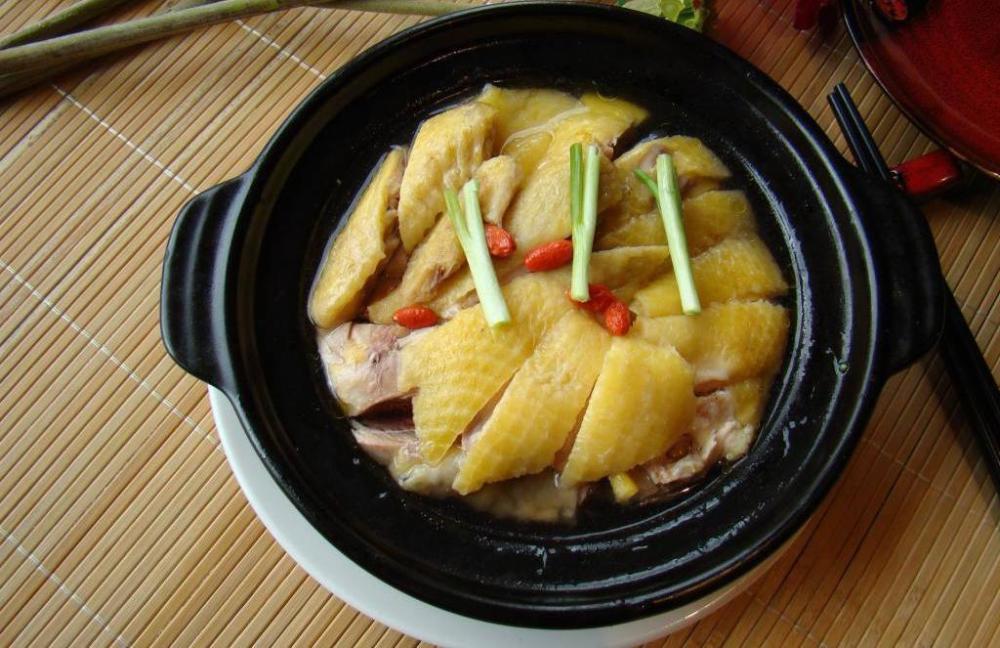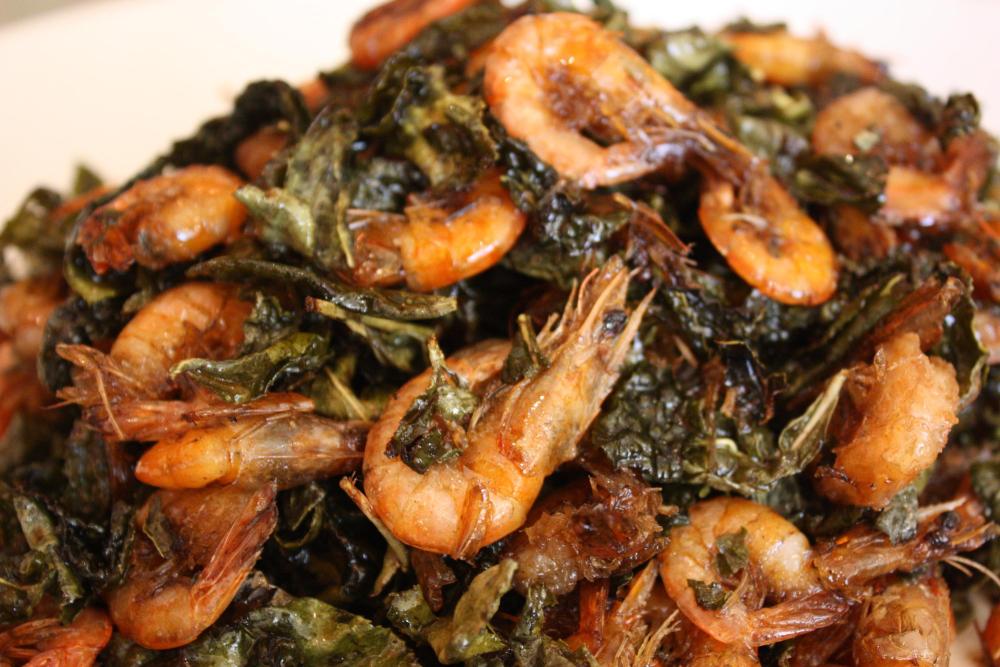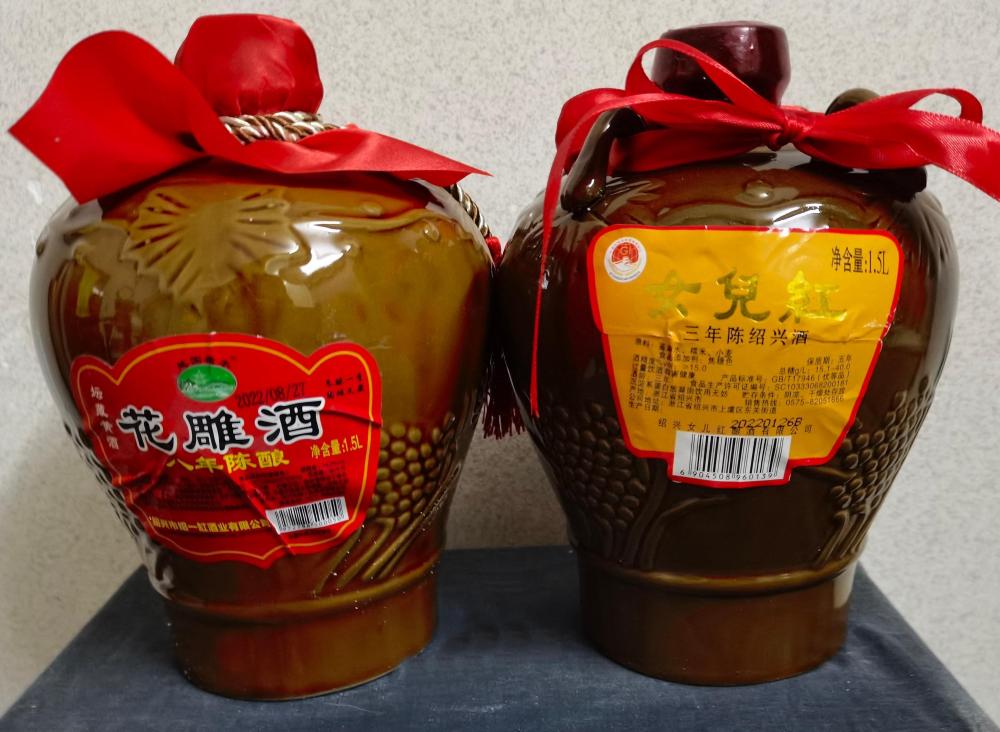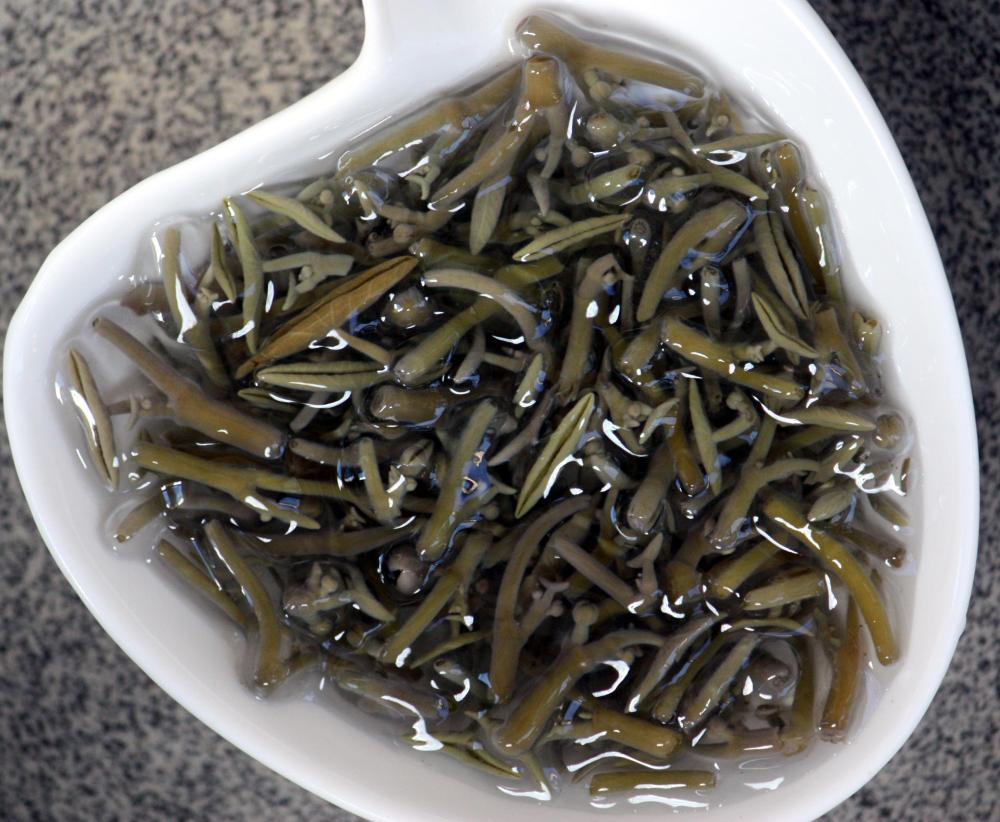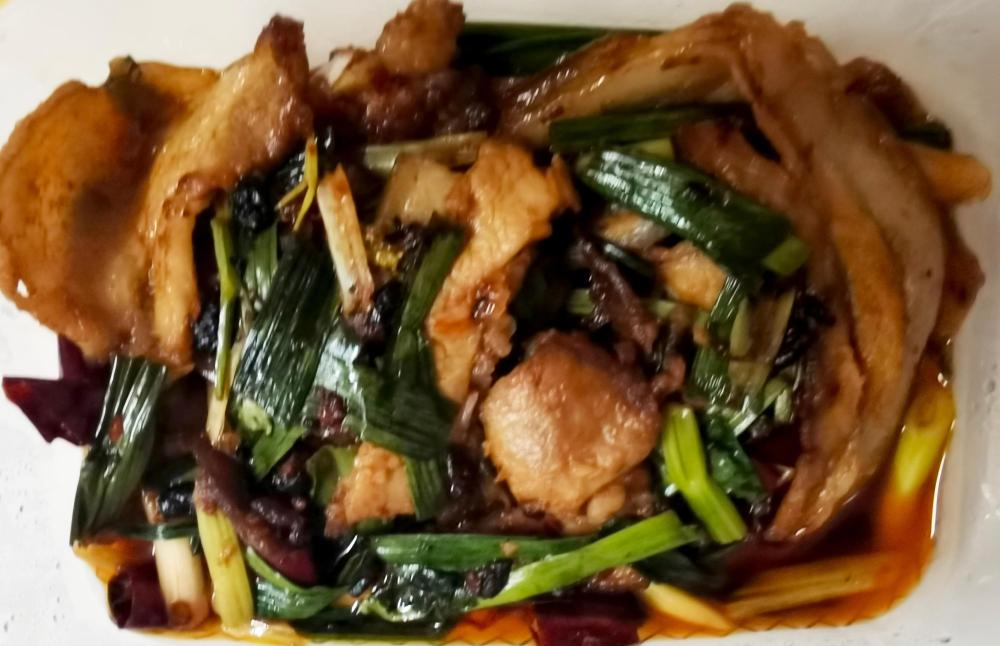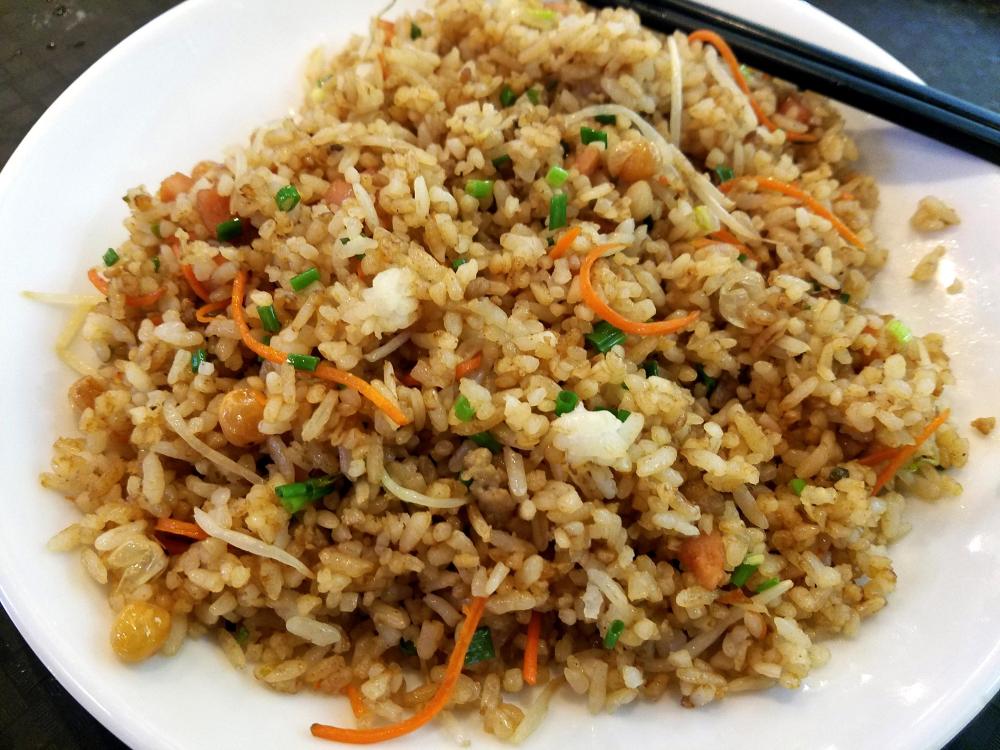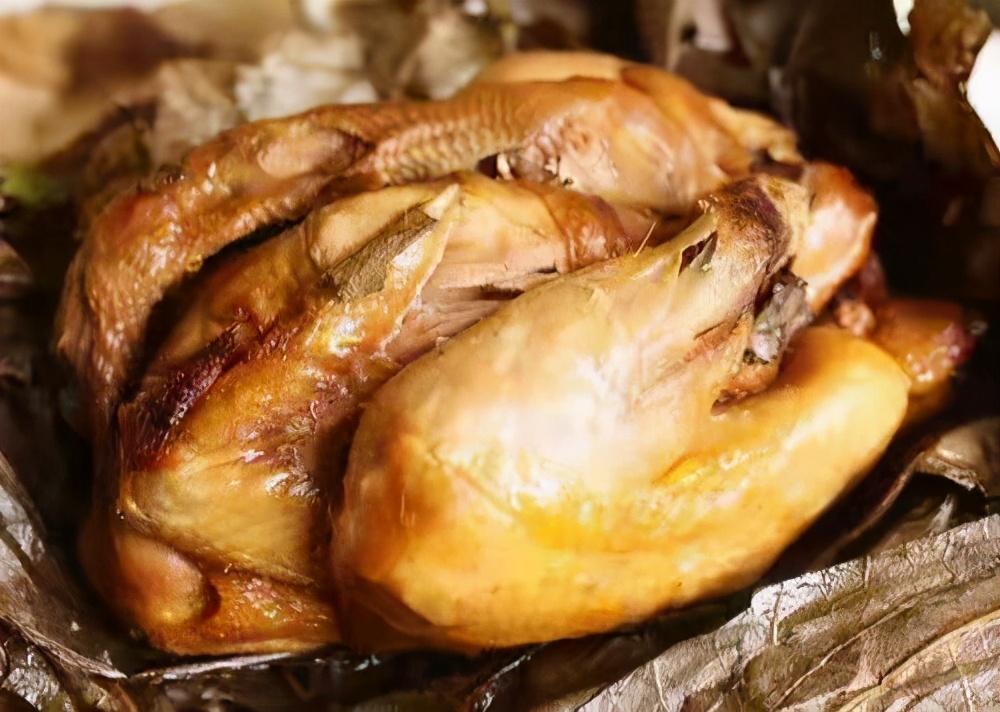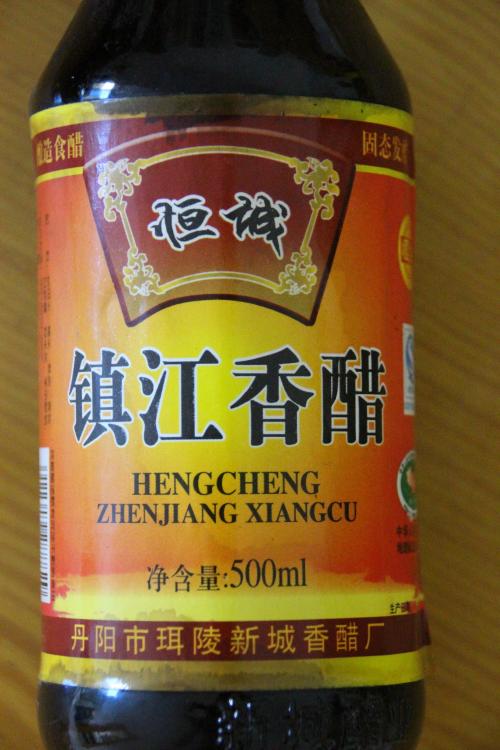-
Posts
16,676 -
Joined
-
Last visited
Content Type
Profiles
Forums
Store
Help Articles
Everything posted by liuzhou
-
Which is why I do it with no oil. It steams in its own juices (and perhaps a little residual water from washing it) preserving more of the flavour.
-
I would say the difference is 'time and oil/fat'. Wilted is heated (without oil) for the briefest of time, just until it becomes limp but still essentially uncooked. Sautéed spinach is cooked in oil beyond that. I much prefer the former as it tastes fresher to me.
-
东北 Cuisine – North-Eastern Cuisine Part Three – 辽菜 (liáo cài) - Liaoning (liáo níng) Cuisine Liaoning, literally meaning ‘far away and peaceful’, is to the south east of Jilin, also bordering Inner Mongolia to the north-west, Hebei to the south-west, North Korea to the south-east and Yellow Sea to the south. The capital is 沈阳 (shěn yáng), Shenyang, formerly known as Mukden. This is where the Japanese invasion of China started in 1931. In the Qing Dynasty (1644-1911), it served as the Imperial pantry, with many of its rarer and more luxurious ingredients shipped to Beijing for the court’s meals, but was far enough away from Beijing for the times (the high speed rail hadn’t quite started yet) to be peaceful, away from the court intrigues, hence the name. Maybe. The province shares many of the features of the rest of the north-east, but also that of Beijing cuisine, the influences being two way, so 御膳 (yù shàn) or 宫廷菜 (gōng tíng cài), Imperial cuisine impacted the local use of the ingredients it was sending the emperor. I’ll say more about Imperial cuisine when we get to Beijing. Also Liaoning’s fertile, mixed terrain of mountains, seas, forests, lakes, grass and sand allow for a wider than normal range of products to be grown or foraged. The North-East region is famous for 饺子 (jiǎo zi), the dumplings known today all over China and the rest of the world. Whether the jiaozi are boiled to make (水饺 - shuǐ jiǎo), steamed to make (蒸饺 - zhēng jiǎo) or fried to nake (锅贴 - guō tiē or 煎饺 - jiān jiǎo), these are a huge part of Chinese culture with whole groups of friends or whole families gathering together before major holidays to prepare them. Chinese New Year is unthinkable without them. Boiled Jiaozi Many people consider 老边区 (lǎo biān qū), Laobian disrtrict in 营口市 (yíng kǒu shì) Yingkou city on Liaoning southern coast to be the best. Types include 三鲜饺子 (sān xiān jiǎo zi), or three delicacy jiaozi (filling being leek, fresh pork and dried small shrimps); 茴香鲜肉饺子 (huí xiāng xiān ròu jiǎo zi), pork and fennel jiaozi; and 西葫芦鲜肉饺子 (xī hú lu xiān ròu jiǎo zi) , pork and zucchini jiaozi. There are of course many other fillings available across China. I’ve even eaten ice cream jiaozi in Beijing! I must here mention 海肠水饺 (hǎi cháng shuǐ jiǎo). Chinese penis fish jiaozi! These are Urechis unicinctus and are only found off the southern coast of Liaoning in the Bohai Gulf, as well as Korea and Japan, so relatively rare. The similar-looking American Urechis caupo found in America’s west coast is a different species. Besides being used as a jiaozi filling, they can be stir-fried with vegetables. They can also be dried and ground for use as an MSG substitute as they also enhance umami. Stir fried penis fish - image baike.so.com 蛋饺 (dàn jiǎo), egg jiaozi are popular here, too. The jiaozi are not filled with egg. Instead the wrapper is. Like a mini omelette. Egg Jiaozi A famous patriotic general 张学良 (zhāng xué liáng), Zhang Xueliang, a famous general, son of a warlord, but later served in the army under both the Nationalist leader, 蒋介石 (jiǎng jiè shí) or, as he is known in the west, Chiang Kai-shek and then under Communist leader, Mao, spoke highly of four Liaoning dishes, namely 小炒猪腰 (xiǎo chǎo zhū yāo) stir-fried kidney, 小炒猪肝 (xiǎo chǎo zhū gān), stir-fried liver, 炸肉丸 (zhá ròu wán) fried meatballs and 小炒百合 (xiǎo chǎo bǎi hé) stir-fried day lilies. Day Lily Flowers Some more unusual Liaoning dishes are 白肉血肠 (bái ròu xuè cháng), boiled pork with blood sausage; 熊掌 (xióng zhǎng), bear paw with dried shrimp and rape (today it doesn’t usually include actual bear paw, which would be illegal, although there is a black market); 炖驼鹿鼻子 (dùn tuó lù bí zi) stewed moose nose; and 鸟巢 (niǎo cháo) bird’s nest. 腊八蒜 (là bā suàn), Laba garlic which is an alarmingly green pickled garlic. Sea food is, of course available, especially by the southern coast. Shrimps, oysters, clams, crab, sea cucumber and sadly, shark fin are all available as well as as wide range of fish, including 虹鳟 (hóng zūn), rainbow trout which is not so common around China. Rainbow Trout Where to next?
-
Yes, I remember that topic. Yakeshi is in Inner Monoglia, which has influenced the North-Eastern cuisines and vice versa. I'll get to covering Inner Mongolian cuisine one day soon.
-
I am still on my self-imposed century egg and lean pork congee breakfast diet. Later today it's going to be the same, but with champagne to celebrate getting through 2023. It hasn't been the best year I've had.
-
Happy New Year ! It's already 2024 here in the east, and for various reasons, I've just eaten dinner at midnight. Actually, I bought it in 2023 but my phone kept ringing with calls from my family then I had to nuke it to warm it up again. 宫保鸡丁 (gōng bǎo jī dīng) - Gongbao Chicken Cubes - (Kung-po Chicken in America) 扬州炒饭 (yáng zhōu chǎo fàn) Yangzhou Fried Rice
-
@Kerry Beal Actually, the original meaning of hogmanay referred to a type of cake which people gave as gifts on the day.
-
-23. Hogmany is New Year's Eve and it's now 23:10.
-
New Year's Day lunch will be a similar menu to that for Christmas. In Scotland, New Year is more important than Christmas and I've kind of kept up that tradition. I've been spending this evening taking stuff out of fridges and freezers in preparation. Smoked sturgeon, caviar and cheeses mainly.
-
东北 Cuisine – North-Eastern Cuisine Part Two – 吉菜(jí cài), Jilin Cuisine Jilin means ‘auspicious forest’ and is immediately south of Heilongjiang, bordering Inner Mongolia to the west, Liaoning Province to the south, a small part of Russia to the east and North Korea to the south-east. Its capital is, surprisingly no longer 吉林市 (jí lín shì), Jilin City as you might expect but was transferred to 长春 (cháng chūn), Changchun in 1954. Although it shares many features of Dongbei cuisine it also has some unique influences of its own and most of the dishes mentioned in my last post are also available here. These other influences come from Inner Mongolia and, particularly from Korea. In fact, Jilin has a reputation of being something of a magpie province, culinarily taking on board many influences. It favours lighter dishes than Heilongjiang, and freshness it important. Game meats, wild vegetables and mushrooms are much appreciated. Deer are raised, so venison is a local choice of protein. The Mongolian influence is shown in mutton / lamb being a favourite. Lamb kebabs (羊肉串) are as popular here as they are all over China. These are street food for the summer months, especially in Jilin city. Mutton on Sticks Jilin is China’s main source of 人参 (rén shēn), ginseng, (Panax ginseng), a herbal root. The plant is extinct in the wild but cultivated in Jilin. It is expensive as it takes five years to be ready to come to market. American ginseng, (Panax quinquefolius) is available all over China, but considered inferior, so cheaper. Apart from its medical usage in TCM for its supposed ‘invigorating’ effect, in Jilin it is mostly used in 参鸡汤 (shēn jī tāng), or Ginseng and Chicken Soup. Actually, this dish originated in Korea where they also grow ginseng, but Jilin has adopted it with enthusiasm. I admit, I don’t see the point. It is tasteless and I am very cynical that it has any real medicinal benefit. The soup is OK though. Hey! It’s chicken soup. Ginseng Ginseng and Chicken Soup China has around two million residents who are of Korean ancestry and have been in China for generations and most are in Jilin. Known as the 朝鲜族 (cháo xiǎn zú), Korean Ethnic Group, they are officially recognised as one of China’s 56 ethnicities. There is also an unknown number of recent arrivals from North Korea who are in China as refugees illegally, often smuggled in by human traffickers. Korean 반찬 (ban zan in the official Korean transliteration but usually banchan in English), 配菜 (pèi cài) in Chinese and ‘side dishes’ in English are often served at the start of Jilin banquets and formal meals, as well as at home. Jilin Style Banchan - Perilla Korea also manifests itself in the popularity of 冷面 (lěng miàn), cold noodles made from sorghum or buckwheat which are served both with sweet and sour or salty sauces. A few years ago I discovered I could buy Korean blood sausage made by the Korean people in Jilin. I am a blood sausage collector so I succumbed. Not the best; not the worst. Korean Blood Sausage More indigenous Jilin dishes include 清蒸白鱼 (qīng zhēng bái yú), steamed white fish, Coregonus peled. These freshwater fish come from 松花湖 (sōng huā hú), Songhua Lake in Jilin city and are simply steamed in a similar manner as Cantonese steamed fish. Jilin Steamed Whitefish Fish lovers must head to the small village of 清零 (qīng líng) near Songhua lake where they have a famous Fish Street with restaurants cooking and selling fish plucked straight from the lake. No tanks here. The lake is the holding tank. Chinese New Year is often celebrated by banquets called 杀猪菜 (shā zhū cài), literally ‘slaughtered pig food’) in which a whole pig is slaughtered and every edible part made into a dish. Next, the last of the Dong Bei cuisine saga, Liaoning.
-
东北 Cuisine – North-Eastern Cuisine Part One - 龙江菜 (lóng jiāng cài) Heilongjiang Cuisine In this post I’m heading to the frozen north, not in person, but in terms of describing as much of China’s various regional cuisines as I can. 东北 (dōng běi) literally means ‘east-north’, the Chinese way of saying north-east and comprises the three provinces of 黑龙江 (hēi lóng jiāng), Heilongjiang, 吉林 (jí lín), Jilin and 辽宁 (liáo níng), Liaoning. The area is in China’s north-eastern corner bordering Russian Siberia, Mongolia and North Korea. It’s damned cold. Until recently, this cuisine wasn't well known even in China and I guess still isn't abroad. But that is changing and the area is becoming fasionable. That said, there are a couple of dishes whose names you may know if not the original renditions. This area was what some people still call Manchuria (Chinese: 滿洲), a term many Chinese find distasteful as it reminds them of them of the puppet state, 满洲国 (mǎn zhōu guó), in Mandarin; manchou kuni in Japanese) which Japan set up after invading China in 1932 and annexing the area under the puppet-leadership of Puyi (溥仪 – pǔ yí), the last Chinese Emperor who had abdicated as a child back in 1911. He was dragged back basically as a hostage. He was imprisoned by the communist regime after 1949, but released after ten years. His story is the subject of Bertolucci's biopic “The Last Emperor”. He lived out his life as a gardener and died in Beijing in 1967. The Japanese were booted out in 1945 at the end of World War Two. In 1949, Mao’s new government changed the name and divided it into the three new provinces. Puyi - The Last Emperor - Public Domain Image I’ll take the three provinces in turn, heading north to south. Heading south is always best in the northern hemisphere, I find. Heilongjiang is named after its principal river and means ‘black dragon river’. It is bone-chillingly freezing in winters with temperatures falling to -40℃ / -40 ℉. The capital, 哈尔滨 (hā ěr bīn) Harbin holds an ice festival every winter. I’ve never been even in summer. I don’t do cold. Heilongjiang borders Siberia (which, perversely, I have been to). That probably explains why I don’t go back. The 龙江菜 (lóng jiāng cài) as they call their food is, as in all of Dongbei, is hearty and the portions famously ample. Also, like most of northern China they traditionally use wheat rather than rice, in the form of breads and especially dumplings. This is where 饺子 (jiǎo zi) Jiaozi originated. The Japanese stole them and called them 餃子 (gyoza), their attempt at pronouncing the Chinese and using the Traditional characters, no longer used in mainland China. One of my favourite places in town is 哈尔滨饺子王 (hā ěr bīn jiǎo zi wáng), a family run restaurant whose name means ‘Harbin Jiaozi King’. The family is from Harbin and most people agree their jiaozi are the best. They sell thousands of handmade jiaozi every day. Harbin Jiaozi King - Liuzhou Harbin Jiaozi King's Wares Heilongjiang also use potatoes, sorghum and c⊘rn as starches, the latter being another good reason for me never to go there! 地三鲜 (dì sān xiān), is a favourite here. It literally means means ‘earth’s three delicacies’ and is stir fried potatoes, hot green peppers, and eggplant with a moderately sweet soy sauce. It is served with hearty meat dishes. Earth's Three Treasures Harbin is also the origin of sweet and sour pork. Known locally as 锅包肉 (guō bāo ròu), this is, in all likelihood, rather different from the offering in your local Happy Wok, or whatever. Not nearly so sweet and certainly doesn’t glow in the dark. Larger slices of pork are coated in potato starch (not batter) and double fried. First at a lower temperature, then again in hotter oil to crisp it up. Stop there! At least that is what the Harbinites did until some Russian traders requested a sauce with it and the modern version evolved. The sweet comes from a moderate amount of sugar – around 100 grams / 3½ ounces to 500 grams / 1lb meat and is balanced by 150 ml / 10 tablespoons of rice vinegar. The sauce also contains rice wine, preferably Shaoxing, garlic, ginger and soy sauce. Guo Bao Rou 木樨肉 (mù xī ròu), Mu Shu Pork is also local, but also not much like that found in the west. And it is emphatically served with pancakes, but with rice. And it isn’t mu SHOO either, but xī, which is pronounced sort of like ‘she’ as the pronoun for females. The mù refers to the wood-ear fungus which are an essential element of the dish; the xī means osmanthus, referring to the aroma; and ròu is the meat. Mu Xi Rou (Mu-Shu Pork) Heilongjiang is also noted for its goose farms. Most of that is sent south to Guangdong and Hong Kong to be roasted as famous in Cantonese cuisine. What I get are the livers, both natural and as foie gras. Goose Liver and Toast Heilongjiang Foie Gras Also available are these rather good goose liver and pork sausages. and, bizarrely given the history of ther region and Japan, the local livers are available in Japanese restaurants there as liver sushi. The restaurants are all Chinese owned. (Anyway, sushi originated in China). In the far north-west of Heilongjiang, bordering Siberia is 兴安岭 (dà xīng ān lǐng) Daxinganling, a mountain range and wooded area. The area has an average annual temperature of -2.8C /27F and in the long winters gets as low as -40C / -40F). Summer is a mere two months long. The area is known for its mushrooms and other wild foods. Particularly prized are 元蘑 (yuán mó), Armillaria mellea, wild honey mushrooms which are made into 小鸡炖蘑菇 (xiǎo jī dùn mó gu) a delicious chicken and mushroom stew. Stewing is not, as I’m sure you know, a common Chinese technique, but Heilongjiang has many examples – blame the weather. Incidentally these mushrooms also grow in America so you needn’t visit the frozen north to sample it. I buy them dried here and they rehydrate well. Chicken and Honey Mushroom Stew Rehydrated Dried Honey Mushroom. The closeness of Russia and the long-established trade relations in Heilongjiang mean that the cuisine has a noticeable Russian influence. Sold all over are 哈尔滨红腊肠 (hā ěr bīn hóng là cháng), Heilongjiang red sausages. These were introduced to China from Russia at the beginning of the 20th century. It resembles a smoked Polish or Lithuanian sausage much more than the well-known lapcheong Cantonese sausages. They are relatively low in fat and smooth textured. Me likes 'em. These are often served with 大列巴 (dà liè bā), a type of rye bread with raisins which was also introduced by Russia in the 1950s. Harbin Red Sausage Da Lei Ba - Russian Style Raisin Bread made in Harbin. Next up, Jilin which I have visited – in summer!
-
Maybe the fish ate it.
-
It is a very unusual expression even in in Chinese. I even asked one friend from Hunan if the expression was unique to Hunan and she asked me what it meant! It refers to dishes served over rice or noodles. Those are not particularly common in Hunan, other than as fast food or in canteens. The menu spiciness scale is something I've seen in British restaurants whether Chinese, Indian or Thai etc. I've never seen it in Asia though, that I recall. The chopped chillies are a Hunan thing. I'm never without a jar of 湖南剁辣椒 (hú nán duò là jiāo), Hunan chopped chilli from Changsha by my side. I'm not sure what cultivar of chilli they use, but I guess local but similar to Thai bird's eye. See here.
-
Interesting. It doesn't strike me as particularly Hunan orientated. Several of the dishes, including your favourite Bamboo Shoots with Pork can be found anywhere in China. Some are distinctly Sichuan: Pork & Pickled Mustard Greens, Hot & Sour Fish Soup Noodle, Hot & Sour Chicken Gizzard, Stir Fried Chicken W. Chili Paste and as you know, Mapo Tofu. Hunan certainly has rice noodles; it is one of the leading rice growing areas in China. But I've never seen them being offered as an alternative to rice in that way. In fact noodles of all kinds tend to be incorporated into specific noodle dishes. I've never seen plain unadorned noodles on a menu like that, other than in hotpot restaurants, where they may be added to the broth in which everything else has been cooked and eaten by the diners. There is a dish called Hunan Rice Noodles but it is a fully composed dish of the rice noodles in which the noodles are boiled then placed in a bowl with broth and a selection from chopped chili, shredded radish, pickled vegetables, cooked pork shreds, chopped beef, minced garlic, etc according to the restaurateur's whim. Finally, if the pictures of the dishes are accurate, Hunan folks would be asking if there is a sudden shortage of chillies. 🌶🌶🌶. It does seem strange that they attribute stopping the pickled mustard greens to unavailablity, yet still offer Pork & Pickled Mustard Green (another Sichuan dish) on the menu .
-
湘菜 (xiāng cài) - Hunan (湖南 - hú nán) cuisine After a year in Xi’an, I moved south to a small city in Hunan in south-central China and fell in love. At first, I hated where I was living, but soon acclimatised. What took me no time at all to love was the food. I had no idea such food existed! What is this? Such wonderful food. Almost 30 years later, I remember every detail of the first meal I ate there. I was home! It remains my favourite Chinese cuisine. I revisit often. Hunan food is known for its extravagant use of fresh and, less often, dried chillies, usually red but also green. In summer every flat surface - basketball courts, railway station platforms, roads and sidewalks - are covered in chillies drying in the sun. I remember a chilli-averse British friend coming to visit and telling me she wanted the fried noodles in one hole-in-the-wall restaurant near my home, but without chilli. I explained to the cook, who gave me a strange look as if to say “that will never work”. She knew me well and knew I have no problem with chilli heat. However, she did her best and wokked up some fried noodles without chilli. My friend still complained. It seemed that after decades of use, the cook’s wok was irretrievably imbued with the heat of the spice. As I’ve mentioned on eG before, Hunan women, especially the younger ones, are often called 湖南辣妹 (hú nán là mèi), literally ‘Hunan Hot Sister’ with the ‘hot’ part referring to the capsicum, 辣椒 (là jiāo) but also the sexual innuendo doesn’t go unnoticed. The singing group, the Spice Girls are called 辣妹 (là mèi) in Chinese. Another important feature of Hunan food is the use of smoke. Hams (腊肉 - là ròu) are usually heavily smoked. as are fish and other meats. The cuisine is often sour – pickles being commonly used, not only on vegetables but also pork and fish. Robust, pungent, spicy flavours rule. Hunan smoked ham Hunan smoked ham Hunan smoked fish The cuisine is usefully split into three styles. 湘江菜 (xiāng jiāng cài), Xiang River cuisine, 洞庭湖菜 (dòng tíng hú cài), Dongting Lake cuisine, and 湘西菜 (xiāng xī cài), Western Hunan cuisine. The first, Xiang River cuisine is that centered on 长沙 (cháng shā), Changsha, the capital of Hunan in the east of the province. The river flows through the city centre. The food is more oily than other areas of Hunan but is fresh and aromatic. Included in this sub-cuisine is the small town of 韶山 (sháo shān), Shaoshan, Mao’s birthplace, as mentioned above. Here, Chinese tourists flock to see his former residence and the Mao museum then go on to eat his favourite dish of 红烧肉 (hóng shāo ròu), red braised pork, also mentioned in the last post. Changsha is also a bit over Mao-centric (he studied there to be a teacher and this was where he took up communism). His favourite restaurant is still there, complete with Mao posters all over the walls, but also with photos of him in the restaurant to prove the authenticity of the claim. As I remember, they didn’t look Photoshopped. Changsha is well-known for its 臭豆腐 (chòu dòu fu), Stinky Tofu. This is fermented tofu in spices until it turns black and yes, stinks. However, like some stinking cheeses, when you get it past your nose and into your mouth, it tastes delicious. Changsha Stinky Tofu Dongting Lake is to the north of Hunan (Hunan literally means ‘south of the lake’) and supplies much of the province’s seafood, so that prevails. The area also produces a lot of chicken, also a favourite. But the best thing I ever ate there was lotus seeds in sugar, even though I have a very un-sweet tooth. I lived in the west of Hunan, one of the last parts of China to be taken by the communists under Mao. It was, in the past, a wild place ruled by warlords and full of bandits. It is a beautiful part of the world and very mountainous area (the floating mountains in the movie Avatar were inspired by the real mountains there) and almost every valley has a different dialect or language. It is home to several of China’s ethnic minorities, especially the Miao and Tujia, but also Dong. This is where I took all the photos in the linked topic below. It has the spiciest food in Hunan, probably spiciest in China and is known for its sour flavours. I showed many West Hunan dishes a few years ago in this topic, so I’m not going to have many here, but there are a few I feel I must mention. 芷江 (zhǐ jiāng) Zhijiang town in Zhijiang Dong Autonomous County was where the Japanese formally surrendered in China at the end of World War Two and is the site of what they call “Memorial Hall of the Victory of the Anti-Japanese War and the Acceptance of the Japanese Surrender”. It also is home to The Flying Tigers Memorial Hall. Although these attract many visitors, it attracts me for its signature dish, 芷江鸭 (zhǐ jiāng yā), simply the best duck dish in the world to my tastes. When I go back, as I do as often as I can, this is what I go for first. Zhijiang duck Another, very local speciality is 沅陵晒兰 (yuán líng shài lán), a type of ham only made in 沅陵 (yuán líng), a small town in Huaihua (怀化 - huái huà) prefecture. This mild, unsmoked salt-cured ham is made using a local breed of black skinned pigs. It is to die for. Usually cut into strips and stir-fried with chilli (of course), garlic and green beans. Shai lan ham Shai lan with green beans Once dish you will struggle to find in Hunan is General Tso’s Chicken as sold in every American Hunan restaurant – perhaps every American Chinese restaurant. It is almost unheard of in Hunan and when the inventor tried to introduce it there the locals were deeply unimpressed. Hunan ain’t sweet. But I love the place. Fuchsia Dunlop's Revolutionary Chinese Cookbook - Recipes from Hunan Province (eG-friendly Amazon.com link) comes highly recommended,
-
Of course. Nothing is free.
-
沪菜 (hù cài) or 本帮菜 (běn bāng cài) in Shanghai dialect – Shanghai (上海) Cuisine Lying at the mouth of the Yangtze River by the Yellow Sea, Shanghai is by far, China’s most cosmopolitan and international city. In the 1940s it had around 100 foreign restaurants and by the end of the 20th century that had risen to 650 restaurants selling foreign food from over 40 different countries. Of course, it also has food from all over China. As of November 2023, it has two-three star Michelin restaurants, neither of which are Chinese; eight 2-star and forty-one 1-star. https://guide.michelin.com/en/shanghai-municipality/shanghai/restaurant/taian-table https://guide.michelin.com/en/shanghai-municipality/shanghai/restaurant/ultraviolet-by-paul-pairet Of course, there are thousands of other restaurants offering both regional Chinese food as well as foreign. What I’m struggling with is identifying any examples of any food that truly originated in the city! Every time I think I’ve found something, a little research leads me elsewhere. I mentioned in a previous post that Shanghai’s famous xiaolongbao are actually from Jiangsu but I’ve found many dishes I suspected might be Shanghainese that turned out to come from provinces far away. I’m unsure why it’s included in Jiangnan cuisine, either. It doesn’t really fit. For a long time, people from all over China have moved to Shanghai in search of fame and fortune, and taking their dishes with them. I have three good friends in Shanghai – two are from Hunan and the other, Guangxi. Few people move in the other direction. 红烧 (hóng shāo), Red Cooking or braising in soy sauce is a very popular technique in the city, but I can find no evidence that it originated there. Chairman Mao’s favourite food was famously said to be 红烧 肉 (hóng shāo ròu), Red Cooked Pork and he was a Hunan native. I’ve been to what I was told was Mao’s favourite restaurant in Changsha, Hunan’s capital, but I’ve been to his favourite iPhone store, too! Mao died in 1976. However, the dish is as popular and common in Hunan, too. Whether this or the Shanghai version came first is uncertain, but I’d bet on Hunan. Alternatively, it may be just a variation on Dongpo pork as described in the last post (or vice versa). They certainly use similar techniques and look alike. Shanghai away from the Michelin stars is renowned for its street food, but again most if not all is imported from elsewhere China. I’m told the city is also better than most in China for its many vegetarian options but again, that doesn’t mean they are exclusively Shanghai cuisine. Shanghai is a great place to eat at any level or price bracket. As I said, it is very cosmopolitan. Even more so, I think than Hong Kong.
-
-
浙菜 (zhè cài) Zhejiang (浙江 - zhè jiāng) Cuisine Zhejiang is found south-west of Shanghai and borders Jiangsu, as mentioned above. Another contributor to the Jiangnan group of cuisines, Zhejiang is an important culinary centre and one of the supposed eight cuisines. Jiangsu and Zhejiang are the most similar to each other of the eight listed cuisines (hence the Jiangnan name), even to the point that both claim to be the origin of certain dishes such as Beggar’s Chicken and Lion’s Head Meatballs. I have researched these at length and allocated them to the most likely real origin. Four recognised centres culinary of excellence in Zhejiang are 杭州 (háng zhōu), Hangzhou the provincial capital (and capital of Song dynasty (960–1279 CE) China; nearby 绍兴 (shào xīng), Shaoxing; and 金华 (jīn huá), Jinhua, with 宁波 (níng bō), Ningbo the runner up. Of these four, only Jinhua is not coastal. Hangzhou is usually considered to be the most refined. Its most famous dish has to be 东坡肉 (dōng pō ròu). Su Dongpo 苏轼 (sū shì), Su Shi (1037 -1101 CE) was a statesman and poet who pissed off the Emperor and was exiled to Hangzhou. His literary name was 苏东坡 (sū dōng pō), Su Dongpo. While in Hangzhou representing the emperor, he dedicated himself to improving the lives of Hangzhou residents. He also wrote poems praising the city’s beauty, especially the West Lake which lies in the city. To this date, he is revered as one of China’s literary giants. There are various legends attributing the invention or, at least, the inspiration of a pork dish to the poet-statesman. Whatever the truth, the dish bears his name still. Although the dish is relatively simple, it does take around four hours to prepare, so few people prepare it at home. However, almost every restaurant in Hangzhou has it on its menu. DongPo Pork consists of fatty pork belly (50% fat to 50% flesh is considered optimum) which is cut into 5 cm / 2 inch cubes then slowly simmered in a mix of water, dark soy sauce, Shaoxing wine, rock sugar, ginger and scallions for around 3½ to 4 hours. The dish turns dark chocolate brown and the fat takes on a melt-in-the-mouth texture and sensation. Despite the amount of fat, it is not greasy. Usually served as part of a family meal with other dishes and rice. Dongpo Pork West Lake also provides the protein for the almost equally famous Hangzhou dish, 西湖醋鱼 (xī hú cù yú), literally ‘West Lake Vinegar Fish’, but often more accurately referred to as ‘sweet and sour fish’. The lake also provides 玛蹄草 (mǎ tí cǎo), literally ‘horse hoof grass’ (describing its shape), or 莼菜 (chún cài), This is Water Shield, Brasenia schreberi, a mucilaginous aquatic plant which is used in soup, famously with beef, but also with chicken and ham together. Water Shield Near West lake is the village of 龙井 (lóng jǐng), the origin of the prized 龙井茶 (lóng jǐng chá), Dragon’s Well Tea. Not only is it used to make a cuppa, but also features in a dish I love and have frequently cooked. 龙井虾仁 (lóng jǐng xiā rén), Fried Shrimps with Longjing Tea and Shaoxing Wine. Longjing Shrimp Heading south-east a little we come to Shaoxing, a small but culinarily important city. Here is, of course, the home of Shaoxing wine, used across China and abroad as the premium cooking wine, but also comes in superior grades for drinking. There is a Shaoxing wine topic here which gives more information on the various grades etc. Shaoxing Wine Probably the dish that uses most Shaoxing is 醉鸡 (zuì jī), Drunken Chicken. This is basically de-boned chicken legs cooked in a 50/50 mixture of chicken stock and Shaoxing wine with ginger, scallions, jujubes and goji berries. The chicken is boiled for ten minutes the left to cool in the broth for a further ten to complete the cooking. It is then put into an ice bath for a final ten minutes and served cold. Popular at banquets and celebratory meals. Do not make this with salted Shaoxing wine as only found in North America. It will be inedible. If you can find unsalted wine, then use the best grade possible. Drunken Chicken Heading south-west from Shaoxing we arrive in Jinhua, situated almost in the dead centre of Zhejiang, far from the sea or rivers. This is famous for its 金华火腿 (jīn huá huǒ tuǐ), Jinhua Ham. Made from the legs of a local breed of pig, 两头乌 (liǎng tóu wū), an amusing name to describe the breed. It means ‘both ends black’ as the breed has distinctive black heads and hindquarters, the trunk and legs being the usual pig pink. The first record of the salt-cured ham dates to the Tang Dynasty (618–907 CE). Widely considered to be China’s best ham, it has been compared favourably with Spain’s Jamón Ibérico. Jinhua Ham Jinhua is also noted for its rice. There are archaeological records to show that rice has been grown here for around 10,000 years. The area is also known for various meat pies and stuffed omelettes. Finally, while in Jinhua, I must mention 一根面能供百 (yī gēn miàn), Longevity Noodles made in Jinhua’s 潘周家 (pān zhōu jiā) village. The noodles are extra-long to indicate long life. In 2014, a noodle maker from the village made a single narrow ribbon-like noodle using one kilogram flour, The noodle was 200 meters long and fed 100 people. Being coastal, Ningbo obviously is famous for seafood, but two standout dishes are its fried eels, 炒鳗鱼 (chǎo mán yú) and braised turtle, 甲鱼 (jiǎ yú ).
-
川味回锅肉 (chuān wèi huí guō ròu), Sichuan Twice-Cooked Pork. Literally Sichuan Taste Return (to the) Pot Meat) Fatty pork belly, lean pork leg meat, celery, garlic, chilli, ginger, douban jiang, scallions, fermented black beans. Twice-cooked refers to the the technique of first boiling the pork belly, then slicing it then stir frying it with the other ingredients. Served with rice.
-
苏菜 (sū cài), - Jiangsu (江苏 - jiāng sū) Cuisine I found myself in something of a quandary. Jiangsu and Zhejiang cuisines are both included in the list of eight (first post) but in modern times they tend to be grouped together, along with the unlisted Shanghai cuisine into 江南菜 (jiāng nán cài), Jiangnan cuisine, literally meaning ‘south of the river cuisine’, the river in question being the 长江 (cháng jiāng) or, as its known in the west, the Yangtze river. Yangtze (Mandarin: 扬子江 (yáng zǐ jiāng) more correctly only refers to the lower reaches of the river. Anyway, in the end, I decided go with the ‘Eight Cuisines’ theory and separate them, largely because the three cuisines involved in Jiangnan do have significant differences, and despite the name meaning the south, does include one city which is actually on the river’s north bank! So here, it is Jiangsu I am looking at. Jiangsu province is in the east of China, north-west of Shanghai and south of Shandong province discussed above. It has a long coastline with the Yellow sea and is bisected by the Yangtze river, meaning that aquatic food is plentiful. It and the rest of Jiangnan are commonly referred to as ‘the land of rice and fish’. Yangzhou 扬州, Nanjing 南京 and Suzhou 苏州 cities are the main centres of culinary excellence in Jiangsu. I will take each in turn, but first some general notes of the combined cuisine. Jiangsu cuisine places great emphasis on perfection of ingredients, knife skills and cooking. Dishes must be neither over or undercooked. Dishes are neither excessively salted or sugared. Sauces must be light and certainly not greasy. Meat dishes are generally simply sauced with the meat’s own juices rather than a created ‘gravy’ style sauce. Yangzhou lies on the north bank of the Yangtze but gets honorary membership of the Jiangnan style. Its cuisine, also known as 淮扬菜 (huái yáng cài), is well-known throughout China and beyond. Its meals are highly pleasing and colourful to the eye as well as the palate. Its soups are renowned but its most famous dish is one most people in the west have eaten, whether they know it or not. This is 扬州炒饭 (yáng zhōu chǎo fàn), Yangzhou Fried Rice, China’s most luxurious rice dish, sadly often bastardised in western Chinese restaurants into ‘special fried rice’ or simply ‘house fried rice’. Many online recipes for the “authentic” dish include char siu which is Cantonese and not used in Yangzhou. There. they would use Jinhua ham, China’s premium ham from the city of Jinhua in Zhejiang. That said, the real thing generally uses simple, fresh ingredients, mainly ham and vegetables and seldom eggs. It is lightly seasoned with salt. Shrimp are often added but not essential. It is served as a prized dish in its own right; not something to throw your day-glo sweet and sour on! Yangzhou Fried Rice Once the capital of China (from 1368 to 1421 when Beijing took over. Nanjing means southern capital; whereas Beijing means northern capital), Nanjing is now demoted to capital of Jiangsu andlies on the south bank of the river. Its dishes are more robustly flavoured but never heavy. It leans towards a more al dente texture rather than tenderness. As a former capital, it has absorbed more outside influences than the rest of Jiangsu. Duck is a local speciality. Peking duck was invented here and taken back to Beijing when it became the emperor’s residence where it was renamed. Originally it was 精灵鸭 (jīng líng yā), the name under which it is still available in Nanjing restaurants. Nanjing salted duck, a dish in which the duck is marinated with fried salt then boiled with ginger and scallions, is very popular in the city and highly appreciated as is duck blood soup. The city’s nighttime food markets and food streets are among China’s best. Suzhou, a beautiful canal and garden city in southern Jiangsu, is a popular side trip for people visiting Shanghai. Its cuisine is slightly sweeter and is noted for its strict use of seasonal vegetables. To fully appreciate Suzhou food, you have to visit several times throughout the year as it is constantly changing, depending on availability. Some dishes found throughout Jiangsu include: 松鼠鳜鱼 (sōng shǔ guì yú) - Squirrel Fish aka 松子鱼 (sōng zǐ yú) aka 菊花鱼 (jú huā yú) - Chrysanthemum Fish. The fish in question is usually Mandarin fish, Siniperca chuatsi, a freshwater species, although sometimes other fish are substituted. The body of the fish is skillfully scored in such a way that, when deep fried, the flesh opens up to resemble the tail of a squirrel or the petalled segments of an open pine cone. Prepared well, it can make for a spectacular banquet dish. After frying, it is coated with a 糖醋 (táng cù) Sweet & Sour sauce. Squirrel Fish 叫花鸡 (jiào huā jī ), Beggar’s Chicken is from Changshu in Jiangsu. There is an attached legend that some beggar or thief stole a chicken and on noticing the Emperor and his guards approaching, quickly covered it in mud to disguise it and dropped into his fire. When the danger was over, he retrieved the chicken and to his surprise it was perfectly cooked. Sounds far-fetched to me and there are variants on the story including that the Emperor somehow also ate the chicken and pronounced it delicious. I have eaten it and agree with the Emperor. The chicken is covered in yellow mud and lotus leaves and roasted. Often today, metal foil is used instead of the mud, but purists reject that. Beggars Chicken 狮子头 (shī zi tóu), Lion’s Head Meatballs are also well-known throughout China. There are two versions of this dish. The first is large pork meatballs braised and served in a broth with Chinese cabbage. This is the original version. In the second the same meatballs are braised in soy sauce, the so-called ‘red cooking’ technique so popular in Shanghai. Jiangsu is the origin of China's best known black vinegar from the city of Zhenjiang. 镇江香醋 (zhèn jiāng xiāng cù), Zhenjiang vinegar (for their own reasons called Chenkiang vinegar in America) is sold worldwide. The vinegar has been manufactured in Jiangsu for around 1,400 years. It is used in many dishes. Zhenjiang Vinegar 小笼包 (xiǎo lóng bāo), Little Basket Dumplings are usually associated with Shanghai where they are indeed very popular, but they originated in Jiangsu according to most authoritive reports, although Kaifeng in Henan province also has a claim. Shanghai probably invented the soup filled version, more correctly called 汤包 (tāng bāo). I talked about this more in this post. Often served with a dip of soy sause and Zhenjiang vinegar (above). Xiao Long Bao There are hundreds more Jiangsu dishes. Sparrow in hot sauce or perhaps, braised turtle may take your fancy, too. Fuchsia Dunlop’s Land of Fish and Rice (eG-friendly Amazon.com link) is an excellent treatise on Jiangnan food in general and includes recipes for many Jiangsu dishes.
-
Yes, I know Hong Kong has mostly scrapped the carts, but many remain here on the mainland, albeit no longer universal.
-
Toisanese is a sub-dialect of Cantonese. Note: The posts on the different Chinese cuisines have been moved (at my request) to this new topic
-
Years ago, I mentioned Brussels Sprouts to some friends in China and they all thought I was joking, so on a trip to England I bought some and photographed one in my hand to show them. That didn't work; they said I had just Photoshopped a regular cabbage onto a picture of my empty hand at different scales. A couple of years ago I found some here, and they accepted they might exist but were maybe just cabbages which had just been born! I can't imagine what they would say about teen tiny sprouts.


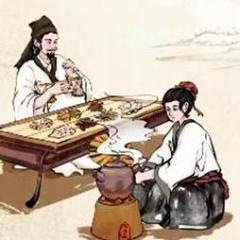


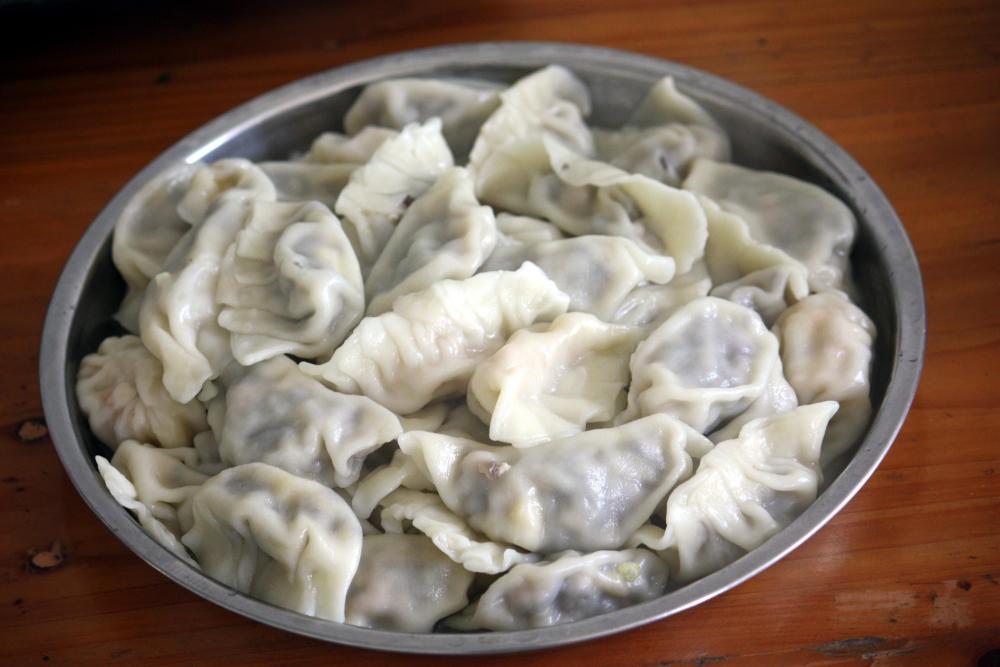
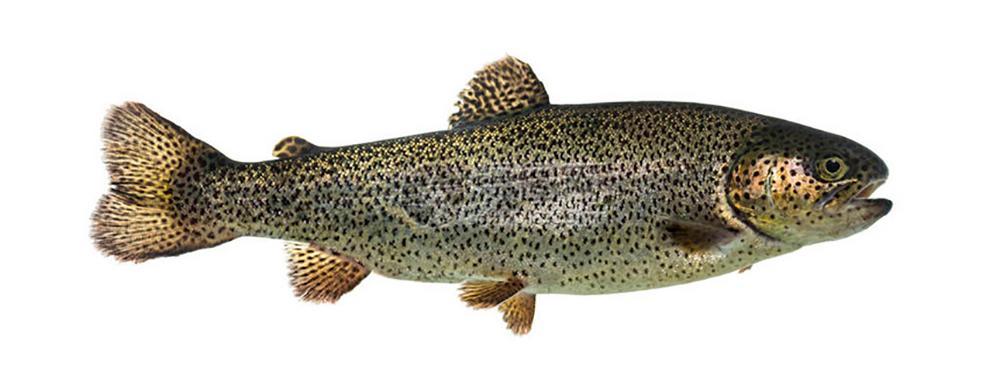
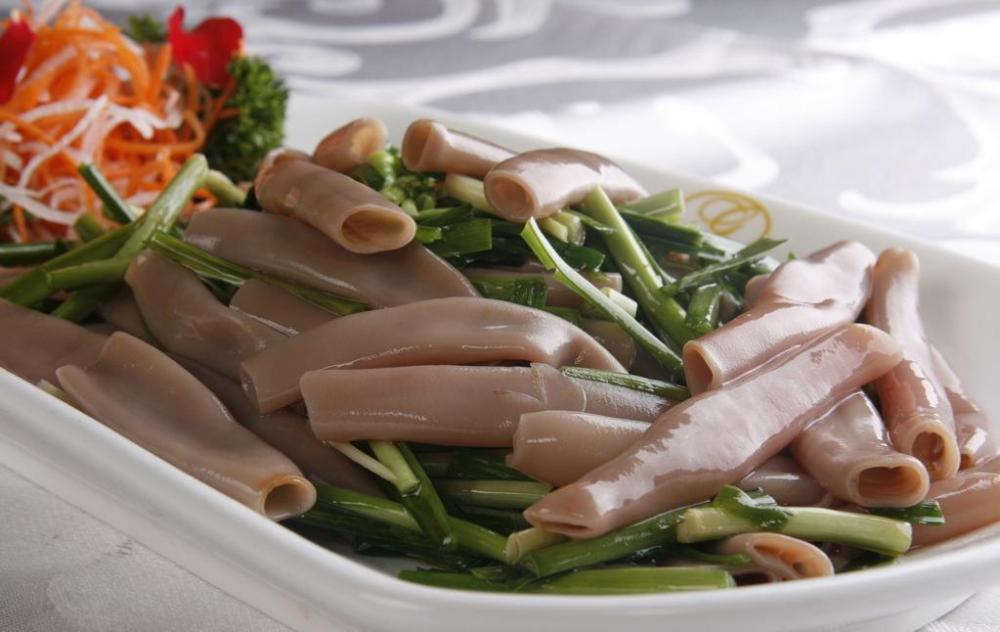
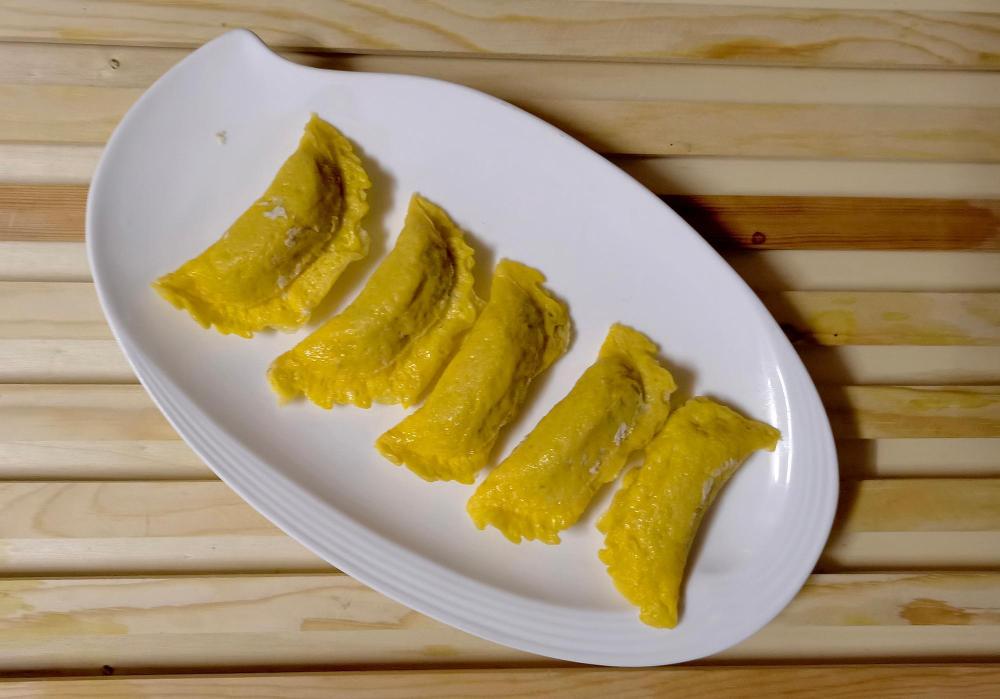
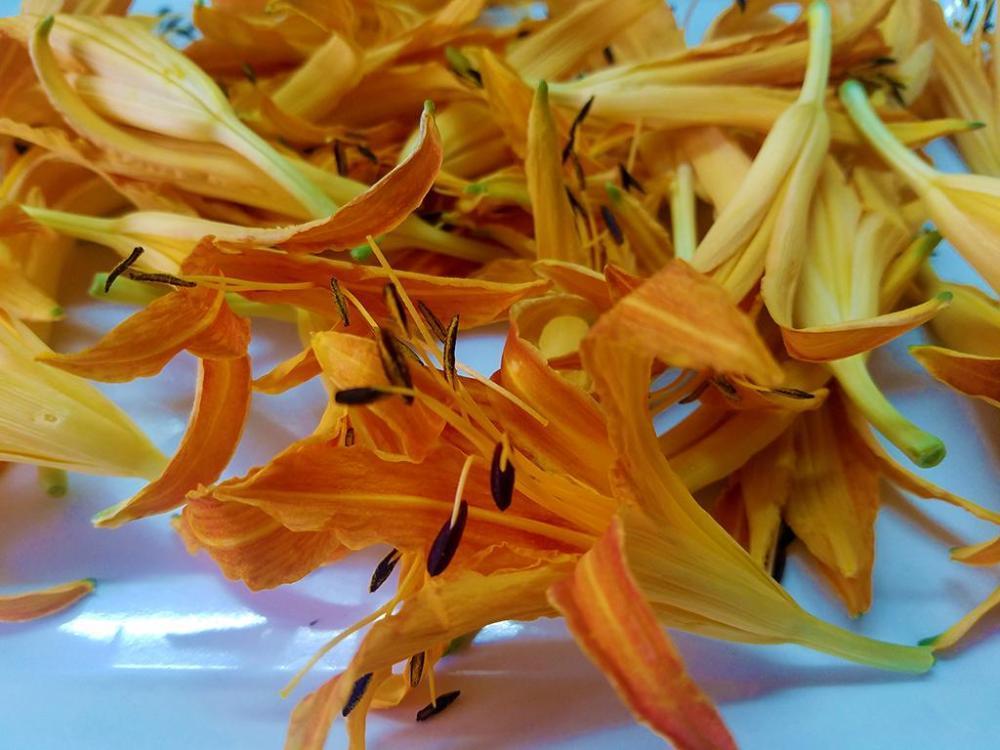
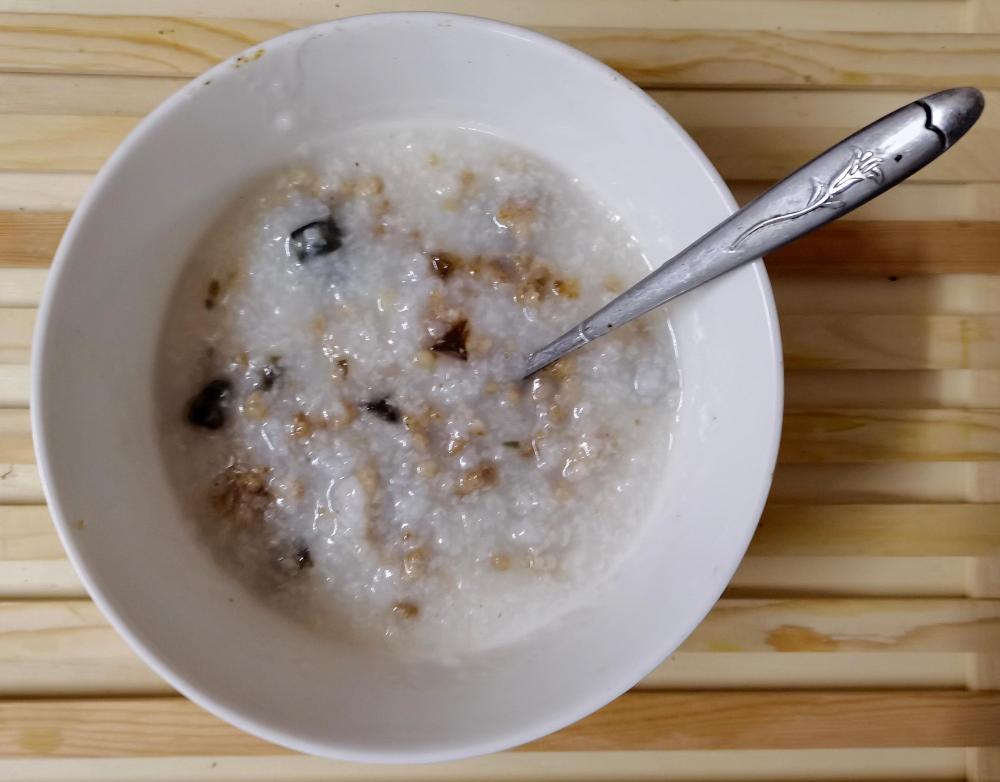
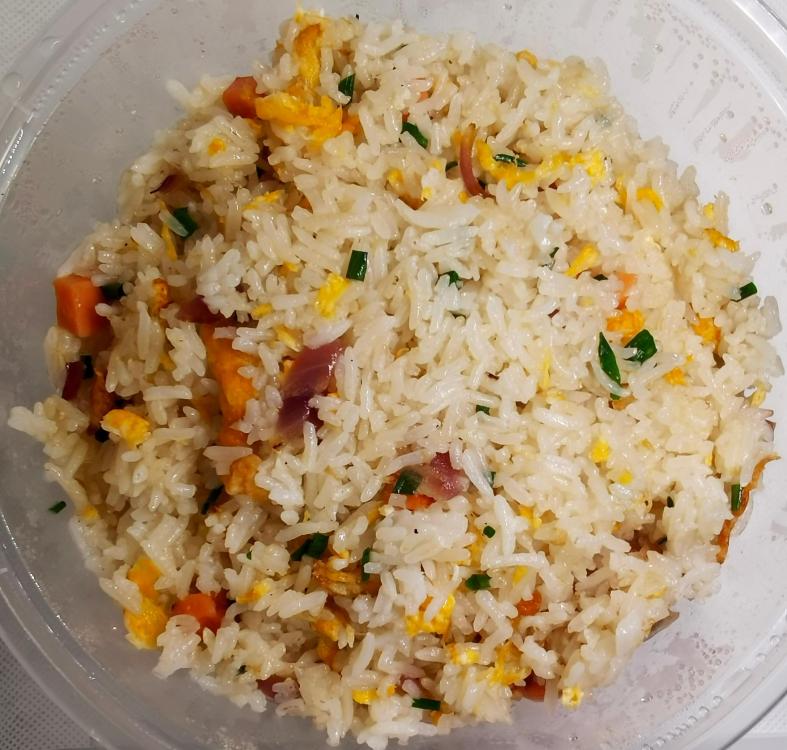
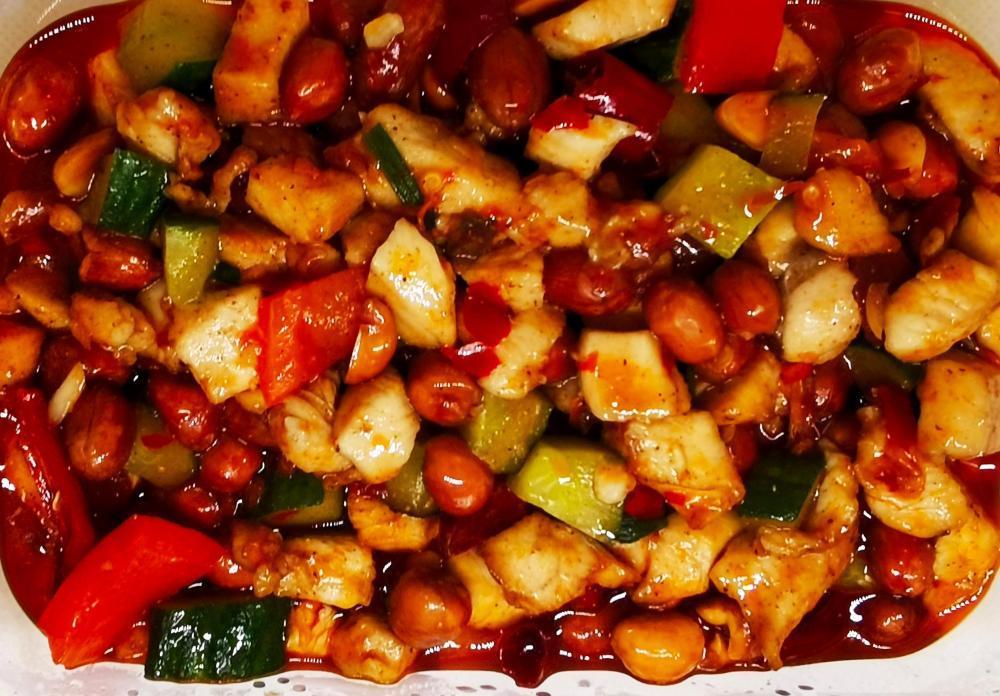



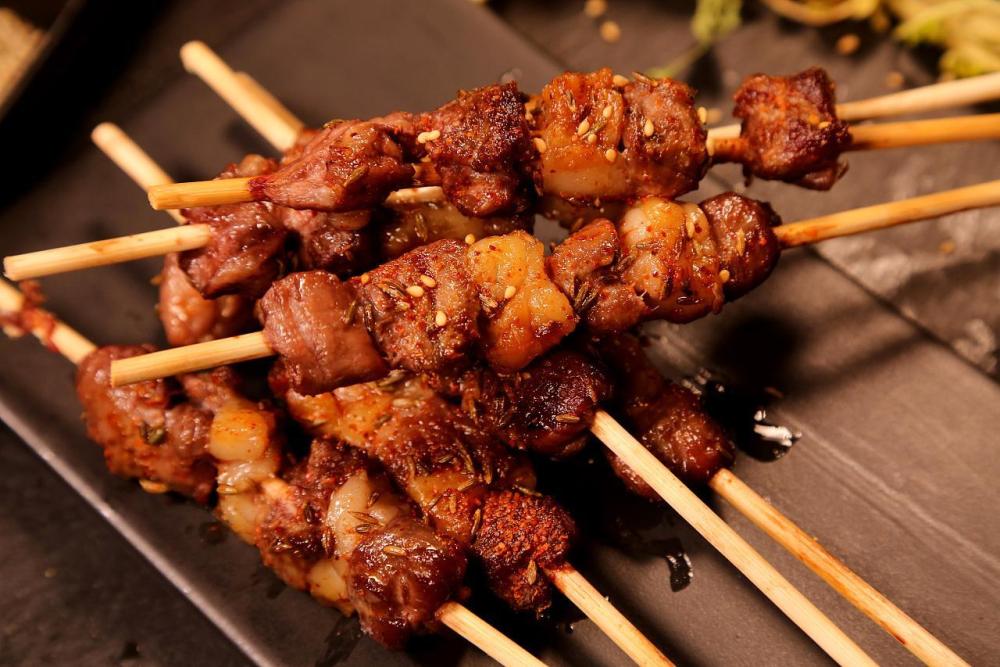
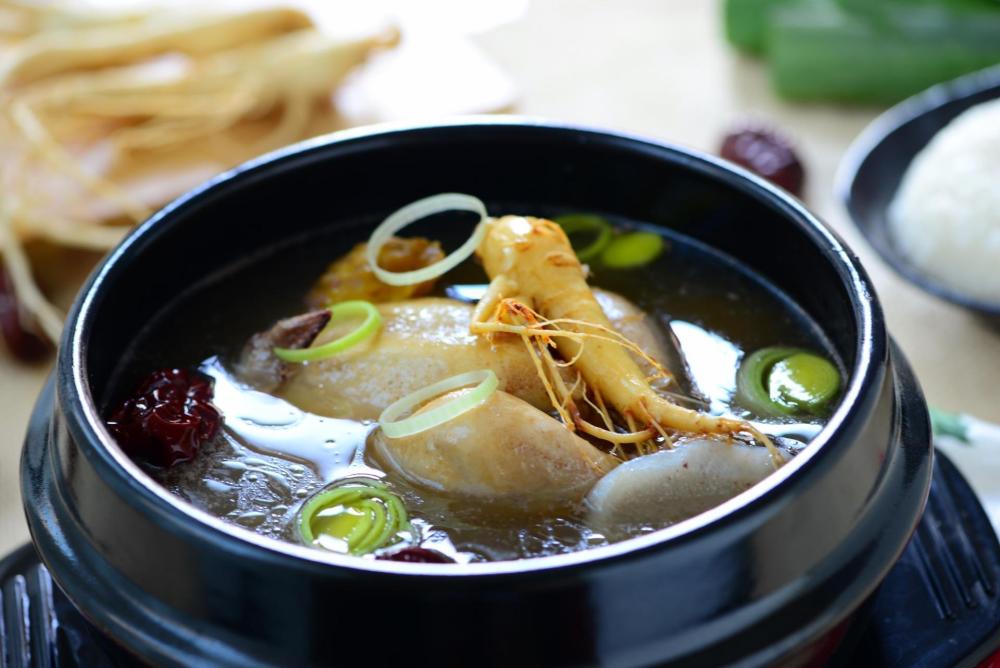

.thumb.jpg.fb02ed97f982a313036d364c358946b2.jpg)

